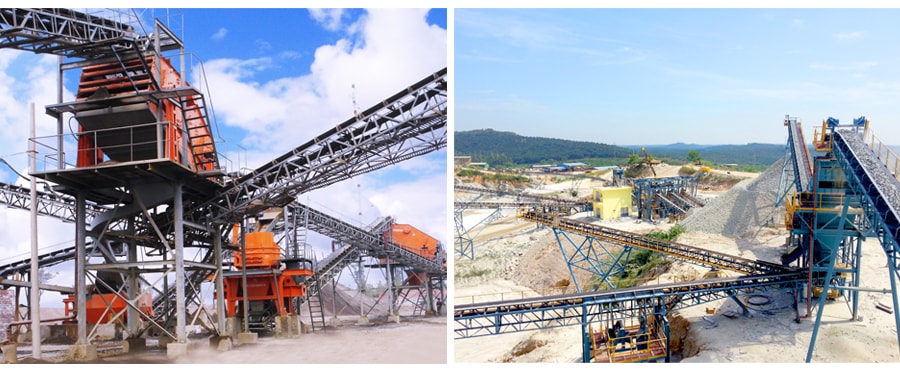Crushing equipment used in the mining industry can be divided into several types based on their different structures, including jaw crushers, cone crushers, roller crushers, and impact crushers.
Jaw crushers are commonly used as coarse and intermediate crushing equipment in mineral processing plants. There are three main types: simple swing jaw crushers, complex swing jaw crushers, and hydraulic jaw crushers. The working principles of the first two types are similar, with only significant differences in the movement trajectory of the movable jaw. Hydraulic jaw crushers are manufactured based on simple swing jaw crushers, with hydraulic cylinders replacing the original safety and adjustment devices. To ensure the continuous and efficient operation of jaw crushers and maximize their production capacity, correct operation, regular maintenance, and periodic inspection are essential.

Cone crushers can be classified into two categories: coarse crushing and medium/fine crushing, depending on their different applications. Coarse crushing cone crushers include gyratory crushers and hydraulic gyratory crushers, which have similar structures, with the latter utilizing hydraulic technology for safety and discharge adjustment. Medium/fine crushing cone crushers include spring cone crushers and hydraulic cone crushers, which have similar structures but differ in terms of safety and adjustment devices. They can be further categorized into standard type (for medium crushing), intermediate type (for medium/fine crushing), and short head type (for fine crushing) based on the shape of their crushing chambers. Proper operation, maintenance, and inspection of various cone crushers are crucial for their optimal performance.
Roller crushers can be divided into smooth-surfaced and non-smooth-surfaced types based on the condition of the roller surface. They can also be categorized into fixed-shaft, single-movable-shaft, and double-movable-shaft types based on the structure of the roller bearings, with the single-movable-shaft type being more widely used. Due to their relatively small production capacity and large footprint, roller crushers are rarely used in metal beneficiation plants but still find extensive use in laboratories.
Impact crushers are a new type of efficient crushing equipment. They are characterized by their small size, simple structure, high crushing ratio, low energy consumption, large production capacity, and uniform product size. However, the wearing of the hammer and impact plate is a concern. With the emergence of high-efficiency wear-resistant materials, impact crushers have shown good performance in some metal beneficiation plants. Impact crushers can be classified into single-rotor and double-rotor types, with the double-rotor type further divided into same-direction rotation and opposite-direction rotation.
The production capacity of crushers can be determined by referring to similar types of equipment already in operation or by using empirical formulas for estimation. For open-circuit crushing, the production capacity of gyratory, jaw, standard, intermediate, and short head crushers can be calculated using the formula Q = K1K2K3K3Qs. For closed-circuit crushing, the formula Qc = KcQsK1K2K3K4 is used. The production capacity of smooth-surfaced roller crushers is calculated using the formula Q = 60πuDnLeδo. The production capacity of impact crushers is calculated using the formula Q = 60KC(h+a)bDnδo. Factors affecting the performance of crushers include the physical properties of the ore, working parameters of the crushers, and operating conditions. The physical properties of the ore include hardness, density, cleavage, moisture, and particle size composition. The working parameters of the crushers include the nip angle, rotational speed, length of parallel belts, feed and discharge openings of the crushers. The operating conditions aim to provide a uniform feed to the crushers, allowing them to work under high crushing ratios and high load factors.

